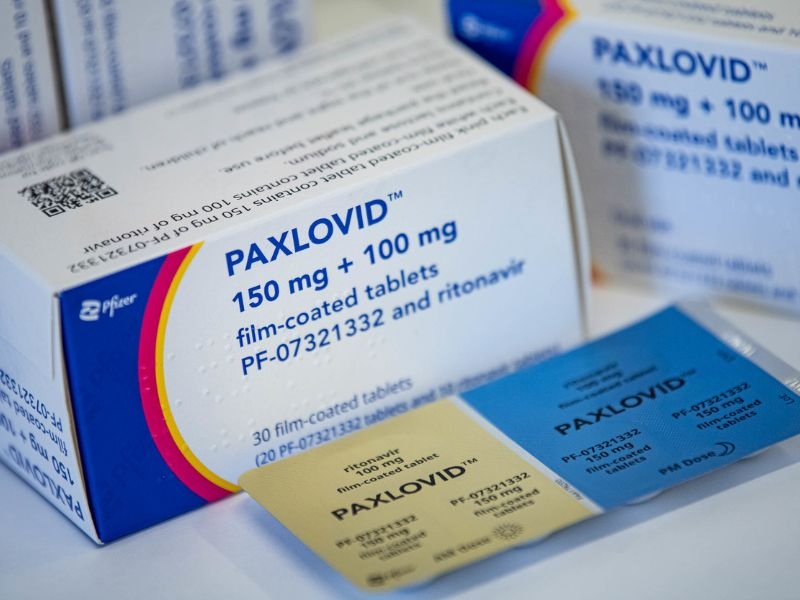Q. What is an emergency use authorization (EUA)?
A. Under section 564 of the Federal Food, Drug & Cosmetic Act, after a declaration by the HHS Secretary based on one of four types of determinations, FDA may authorize an unapproved product or unapproved uses of an approved product for emergency use. In issuing an EUA, FDA must determine, among other things, that based on the totality of scientific evidence available to the agency, including data from adequate and well-controlled clinical trials, if available, it is reasonable to believe that the product may be effective in diagnosing, treating, or preventing a serious or life-threatening disease or condition caused by a chemical, biological, radiological, or nuclear agent; that the known and potential benefits of the product, when used to treat, diagnose or prevent such disease or condition, outweigh the known and potential risks of the product; and that there are no adequate, approved, and available alternatives. Emergency use authorization is NOT the same as FDA approval or licensure.
Q. What does this EUA authorize? What are the limitations of authorized use?
A. The EUA authorizes the emergency use of the unapproved product Paxlovid (nirmatrelvir co-packaged with ritonavir) for the treatment of mild-to-moderate coronavirus disease 2019 (COVID-19) in adults and pediatric patients (12 years of age and older weighing at least 40 kg) with positive results of direct severe acute respiratory syndrome coronavirus 2 (SARS-CoV-2) viral testing, and who are at high risk for progression to severe COVID-19, including hospitalization or death.
Paxlovid is not approved for any use, including for the treatment of COVID-19.
Paxlovid is not authorized:
• For initiation of treatment in patients requiring hospitalization due to severe or critical COVID-19.
• For pre-exposure or post-exposure prophylaxis for prevention of COVID-19. • For use longer than five consecutive days.
Q. How is high risk defined under the EUA?
A. Information about conditions that place a patient with mild-to-moderate COVID-19 at increased risk for disease progression or death can be found at the Centers for Disease Control and Prevention site: People with Certain Medical Conditions. Health care providers should consider the benefit-risk for an individual patient.
Q. Are there potential side effects of Paxlovid?
A. Possible side effects of Paxlovid include dysgeusia (altered or impaired sense of taste), diarrhea, increased blood pressure, and myalgia (muscle aches).
Nirmatrelvir and ritonavir, which comprise Paxlovid, also interact with other medicines, which may lead to serious or life-threatening adverse reactions. Patients should tell their health care providers all of the medicines they are taking, including over-the-counter medications and herbal supplements, when deciding whether to take Paxlovid. Liver problems have occurred in patients receiving ritonavir. Therefore, caution should be exercised when administering Paxlovid to patients with pre-existing liver diseases, liver enzyme abnormalities, or hepatitis. Patients should talk with their health care provider if they have a history of liver problems.
Paxlovid is not recommended for patients with severe kidney problems, and a different dose is needed for patients with moderate kidney problems. Patients should talk with their health care provider if they have a history of kidney problems. Because nirmatrelvir is co-administered with ritonavir, there may be a risk of HIV-1 developing resistance to HIV protease inhibitors in individuals with uncontrolled or undiagnosed HIV-1 infection. Patients with HIV who are not on treatment with “undetectable” viral load should talk with their health care provider before taking Paxlovid. There are limited clinical data available for Paxlovid. Serious and unexpected adverse events may occur that have not been previously reported with Paxlovid use.
Q: Is Paxlovid FDA-approved to prevent or treat COVID-19?
A. No. Paxlovid is not FDA-approved to prevent or treat any diseases or conditions, including COVID-19. Paxlovid is an investigational drug.
Q. How can Paxlovid be obtained for use under the EUA?
A. For questions on how to obtain Paxlovid, please Contact Us
Q. Who may prescribe Paxlovid under the EUA?
A. Paxlovid may only be prescribed for an individual patient by physicians, advanced practice registered nurses, and physician assistants who are licensed or authorized under state law to prescribe drugs in the therapeutic class to which Paxlovid belongs (i.e., anti-infectives).
Q. When should Paxlovid be administered to a patient?
A. Patients should talk to their health care provider to determine whether, based on their individual circumstances, they are eligible to receive Paxlovid. Paxlovid treatment should be initiated as soon as possible after diagnosis of COVID-19 and within 5 days of symptom onset.
More information about administration is available in the Fact Sheet for Health Care Providers.
Q. Does the EUA permit the use of Paxlovid for some hospitalized patients?
A. Yes, Paxlovid is authorized for the treatment of patients hospitalized with mild-to-moderate COVID19, such as patients admitted for monitoring of drug-drug interactions. Paxlovid is also authorized for patients hospitalized for conditions other than COVID-19, provided the terms of the authorization are otherwise met. Paxlovid is also authorized for patients who require hospitalization due to severe or critical COVID-19 after starting treatment with Paxlovid. These patients should complete the full 5-day treatment course per the healthcare provider’s discretion.
Q. Are there data showing Paxlovid may provide benefit for treatment of mild-to-moderate COVID-19 for certain patients?
A. Yes. The primary data supporting this EUA for Paxlovid are from EPIC-HR, a randomized, double-blind, placebo-controlled clinical trial studying Paxlovid for the treatment of non-hospitalized symptomatic adults with a laboratory confirmed diagnosis of SARS-CoV-2 infection. Patients were adults 18 years of age and older with a pre specified risk factor for progression to severe disease or were 60 years and older regardless of pre specified chronic medical conditions. All patients had not received a COVID-19 12/22/2021 vaccine and had not been previously infected with COVID-19. The main outcome measured in the trial was the proportion of people who were hospitalized due to COVID-19 or died due to any cause during 28 days of follow-up. Paxlovid significantly reduced the proportion of people with COVID-19 related hospitalization or death from any cause by 88% compared to placebo among patients treated within five days of symptom onset and who did not receive COVID-19 therapeutic monoclonal antibody treatment. In this analysis, 1,039 patients had received Paxlovid and 1,046 patients had received placebo and among these patients, 0.8% who received Paxlovid were hospitalized or died during 28 days of follow-up compared to 6% of the patients who received placebo. Of the people who received Paxlovid, no patients died within this time period compared to 12 people who received placebo. Details on the clinical trial results can be found in Section 14 of the authorized Fact Sheet for Health Care Providers.
Q. Are there reporting requirements for health care facilities and providers as part of the EUA?
A. Yes. As part of the EUA, FDA requires health care providers who prescribe Paxlovid to report all medication errors and serious adverse events considered to be potentially related to Paxlovid through FDA’s MedWatch Adverse Event Reporting program. Providers can complete and submit the report online; or download and complete the form, then submit it via fax at 1-800-FDA-0178. This requirement is outlined in the EUA’s Fact Sheet for Health Care Providers. FDA MedWatch forms should also be provided to Pfizer. Health care facilities and providers must report therapeutics information and utilization data as directed by the U.S. Department of Health and Human Services.
Q. Do patient outcomes need to be reported under the EUA?
A. No, reporting of patient outcomes is not required under the EUA. However, reporting of all medication errors and serious adverse events considered to be potentially related to Paxlovid occurring during treatment is required.
Q. FDA has issued a number of EUAs including for therapeutics. If state laws impose different or additional requirements on the medical product covered by an EUA, are those state laws preempted?
A. As stated in FDA’s Emergency Use Authorization of Medical Products and Related Authorities Guidance, “FDA believes that the terms and conditions of an EUA issued under section 564 preempt state or local law, both legislative requirements and common-law duties, that impose different or additional requirements on the medical product for which the EUA was issued in the context of the emergency declared under section 564.” The guidance explains the basis for FDA’s views on this subject.
Q. Can health care providers share the patient/caregiver Fact Sheet electronically?
A. Under the authorization, Pfizer must make available the authorized Fact Sheets on its website at: www.COVID19oralRX.com. Health care facilities and health care providers must ensure that fact sheets are made available to patients, parents, and caregivers through “appropriate means” and electronic delivery of the Fact Sheet is an appropriate means.
These are the frequently asked questions by the FDA at










 And then Add to Home Screen.
And then Add to Home Screen.